I was shocked recently when I read about school enrollment declines in Salt Lake City. Both the public elementary schools I attended are among the many slated for closure, and the district is slowly losing about 3% of its enrollment every year. These trends preceded the state’s commitment to ESAs, which threaten to accelerate the flow of students out of district-run schools. Similar declines exist in most of the 24 states that have enacted vouchers, education savings accounts, or tuition tax credits. While most students continue to attend traditional public schools, red states actively encourage students to leave via state-funded tuition subsidies.
However, enrollment decline in traditional public schools is not only a red state phenomenon, as big cities including New York, Seattle, Chicago, and Minneapolis are also steadily losing students. As CRPE showed five years ago, enrollment declines have accumulated for many years and are not all attributable to the emergence of charter schools, contrary to some district leaders’ claims. Some city districts can fall into a death spiral of lost enrollment, lost funding, school quality decline, more lost enrollment, etc.
The map below shows that enrollment declines are common among the largest city school systems, including those in states that have recently adopted public support for private school choice. Other states supporting private school choice, whose major cities are in rapid decline but not shown on the map, include Ohio (Cleveland, Columbus), Oklahoma (Oklahoma City), Kansas (Wichita), West Virginia (Wheeling), Missouri (St. Louis), and Iowa (Iowa City).
Courtesy of EdSurge. Click on the interactive map above to open in a new window.
Pulling resources away from public schools and districts (most commonly in large metro areas) via vouchers can create significant problems for states. Enrollment loss will likely reduce the quality of schools that will continue to educate most children in the state. States will be left with large numbers of students who are unprepared for college and career success.
Of course, one of the intended outcomes of private school choice programs is to subject existing schools to competition and force improvements. But inflexibilities created by the states themselves put districts in a bind. Unlike private schools and public charter schools, traditional public schools can’t easily shed costs or reallocate funds to improve programs and instruction. They are bound by accountability and reporting requirements, teacher salary and pension requirements, and a lack of control over class size. The combined effect of these state actions is that school districts are solvent only when they grow. When enrollment is stagnant or declining, districts run deficits. The money available for instruction shrinks, and flexibility goes away completely.
For private choice programs to drive real improvement in district schools as intended, states need to provide more flexibility for districts to act on those opportunities for improvement. If states fail to solve this problem, the results could be disastrous.
State Rules Impede District Adaptation
Today, state budgets that pay for private school tuition use money separate from district funding formulas. But the sponsors of private school tuition initiatives hope that reductions in spending on district schools will ultimately offset state expenditures and tax forgiveness.
Sponsors of ESAs and voucher plans see no problems with this, reasoning that affected school systems will have less money, but fewer students to educate. In some cases, local districts could end up having more dollars per pupil as their enrollment declines.
However, these sunny views ignore how states have made public K-12 schools inflexible and unable to manage declines in enrollment and funding. To comply with state regulations, manage state funds, and meet reporting requirements, districts must maintain large central offices where costs are hard to reduce. States also set teacher and administrator salary schedules that guarantee annual teacher raises (even in years when no new collective bargaining agreement inflates the whole wage scale). Consequently, teacher salaries cost more every year, even if the teacher workforce remains the same size. Many states, including a majority of those with private school tuition plans, impose a last-in, first-out principle when districts must cut teaching staff. As a result, districts must cut newer and lower-cost teachers and preserve the jobs of older and higher-paid ones, resulting in a disastrous loss of teacher numbers and talent.
States make it hard for districts to sell or jettison school buildings that become unnecessary at lower enrollment levels. States also set class size maximums, which reduce schools’ flexibility to assign pupils and teachers to make the best use of the best teachers and require every school of a certain size to have a fixed set of administrators (principals, assistant principals, etc.).
Finally, most states have old-fashioned teacher pension systems that guarantee administrators and teachers’ incomes based on their higher salaries, but do not save up the funds required while teachers work. Instead, districts must pay some or all pension costs for retired teachers from their current budgets. This reduces the amounts districts have to spend on current instruction. It is especially difficult for districts whose enrollment has shrunk, as they must pay for large numbers of former teachers on a basis of many fewer students.
The combined effect of these state actions is that school districts are solvent only when they grow. When enrollment is stagnant or shrinks, districts run deficits. The money available for instruction shrinks, and flexibility goes away completely.
District actions often make these problems worse. The most recent example is the decision made by some to hire permanent staff on temporary federal pandemic relief money, thus increasing the staff salary bill when incomes are falling.
Many Students Will Still Depend on Metro Area Districts
The impact of public choice programs is felt most strongly in places where K-12 student populations are concentrated and where private school seats are available. Large cities tend to be where the largest number of private school seats exist, so these cities continue to be most impacted by state-supported student transfers.
While it’s possible that states could experience a smooth transition to private schools in metro areas, there are almost surely limits on the number of private schools—and possible seats for students.
Existing private schools are products of years of investment by alumni, boosters, parent organizations, and churches. State-sponsored tuition programs might enable existing schools to fill their vacancies and possibly expand a little. But expanding existing schools, even if through starting new campuses, is a financial risk, takes time, and will lead to some failures. So, any great expansion of private school enrollment would depend on the emergence of new schools.
How likely is it that large numbers of new schools will emerge, even in metro areas where numbers of potential students and teachers make this imaginable? Who will invest up front to create schools, and how will they find enough teachers? Charter schools, which benefit from federal and foundation-funded start-up grants, often struggle to open. Their enrollment-based funding, though higher than the amounts available from new state private school tuition support, is still lower than that of regular public schools, making teacher recruitment difficult and turnover a serious problem.
Some people want (and are qualified) to lead and teach in private schools, but their numbers are not high in urban areas with many other job opportunities. And the scale of new school development that would be required is enormous.
Consider the case of Salt Lake City. To accommodate a quarter of the district’s 22,000 children, 5,500 new seats in private schools would have to arise. Assuming the average enrollment in new schools would be 400 students, that would require 140 new schools, or nearly three times the number (58) of private schools estimated to exist now in the Salt Lake metropolitan area. Assuming a pupil-teacher ratio of 20, the new schools would require 8,000 new teachers. Larger cities would face more daunting numbers (in Houston, for example, greater by a factor of 7).
States could greatly increase the amount of public money behind private school tuition programs and offer new money to support new school startups. That could lead to enhanced private school growth, as it did for charter schools in New Orleans. But Louisiana used chartering, which includes significant startup funding and many more dollars per pupil than any current state private school tuition. Even so, the state had to close some failed charters and start new ones. Without vast new investment and spending, private schools will not proliferate to absorb all the students now served by red-state metro school districts.
States Could End Up With Many Unprepared Young Adults
Though many city students will still need school districts, enrollment losses due to private school choice will likely reduce the quality of their education. Students in district schools will suffer from having money meant for instruction diverted to overhead costs, as described above. They will likely endure repeated school closures, understaffing, elimination of elective classes, and increased difficulty getting good courses in math and science. These problems already affect children in shrinking districts in all states, but public support for private school tuition, particularly in red states, could make it all much worse.
Some creative district leaders might succeed in reorienting their schools around effective bare-bones approaches. But districts whose teaching forces have been decimated will struggle to avoid a downward spiral of teaching and learning.
Red state governments often have tense relationships with their big city districts, but poor student outcomes still have significant social and economic consequences.
What states need to do to give their districts a chance
Funding declines will challenge metro districts to the core, whatever states do. But red states committed to private school choice can remove the requirements that make districts insolvent when not growing by:
- Loosening rules about school staffing. Districts should allow some schools to have thinner administrative structures (like charter schools), and allow the principal or school leadership staff to oversee more than one school.
- Eliminating salary schedules that force automatic annual salary increases for all employees. Like state universities, all teachers should have annual performance reviews, but individual raises should depend on merit and the availability of funds.
- Requiring waivers if districts seek to keep open any school serving less than 40% of its peak historic enrollment. States can help districts with the local politics of school closures by publicly pressing them to act.
- Requiring districts with falling enrollment to sell or lease out (at market rates) any school buildings not being actively used for instruction.
- Forbidding “last-in, first-out” rules when teacher forces must be reduced.
- Invalidating any collective bargaining agreement that puts a district in deficit in the first or second year after negotiation.
- Redesigning K-12 retirement systems so today’s students are not paying for yesterday’s teachers. A forthcoming paper in this series will address retirement costs and fairness to teachers in detail.
States have constructed school districts to be solvent only when growing. This is a problem all over the country, but red states have made it more acute by encouraging student transfers to private schools. States can restructure districts so they are no longer pyramid schemes. Everyone would benefit from this, as districts could gain the ability to compete more effectively with state-subsidized private schools. Fewer controls on district spending and less state-imposed bureaucracy will benefit districts and give students who depend on traditional public schools a far better shot at a good education.





